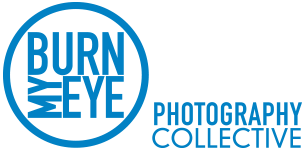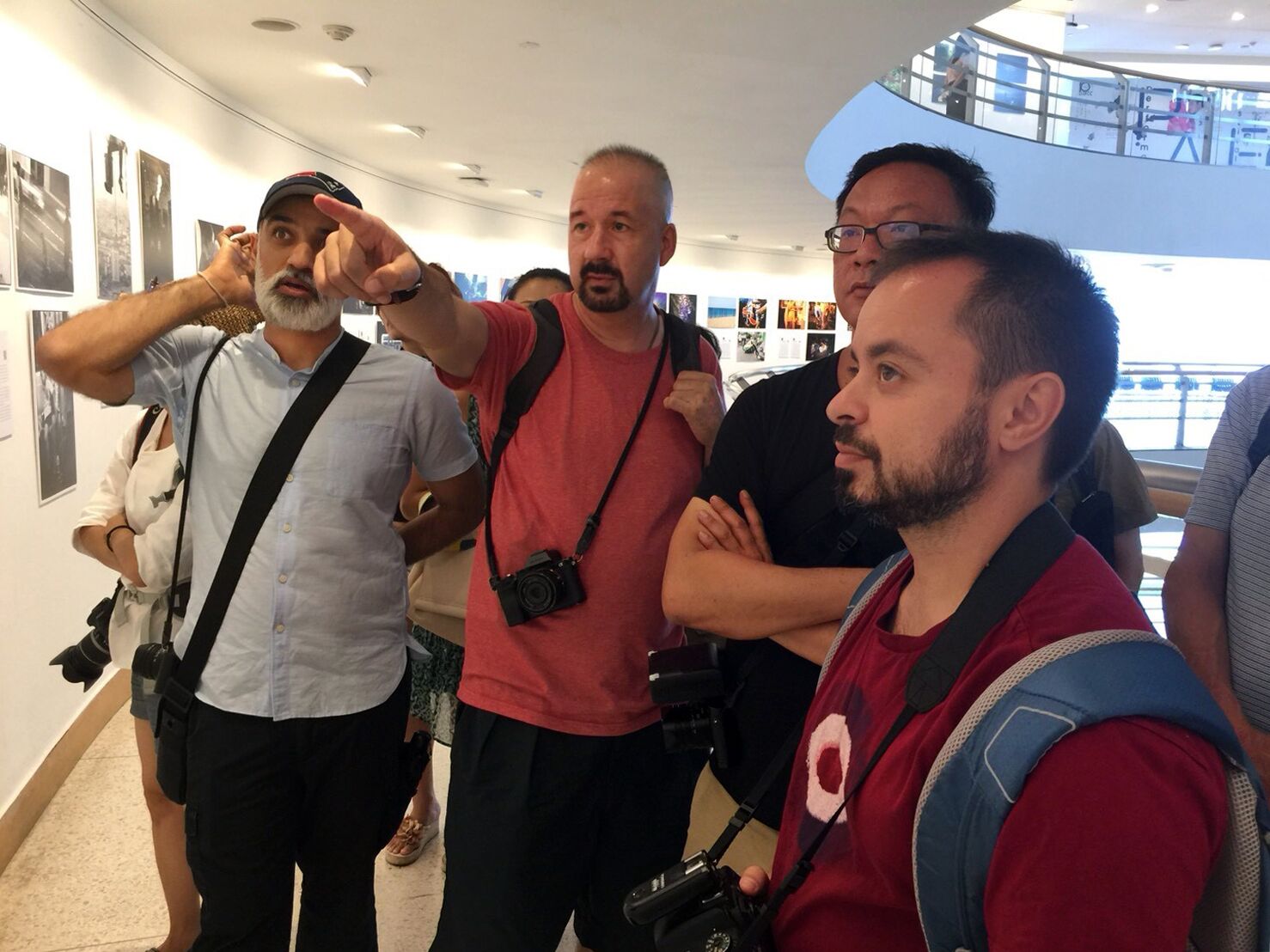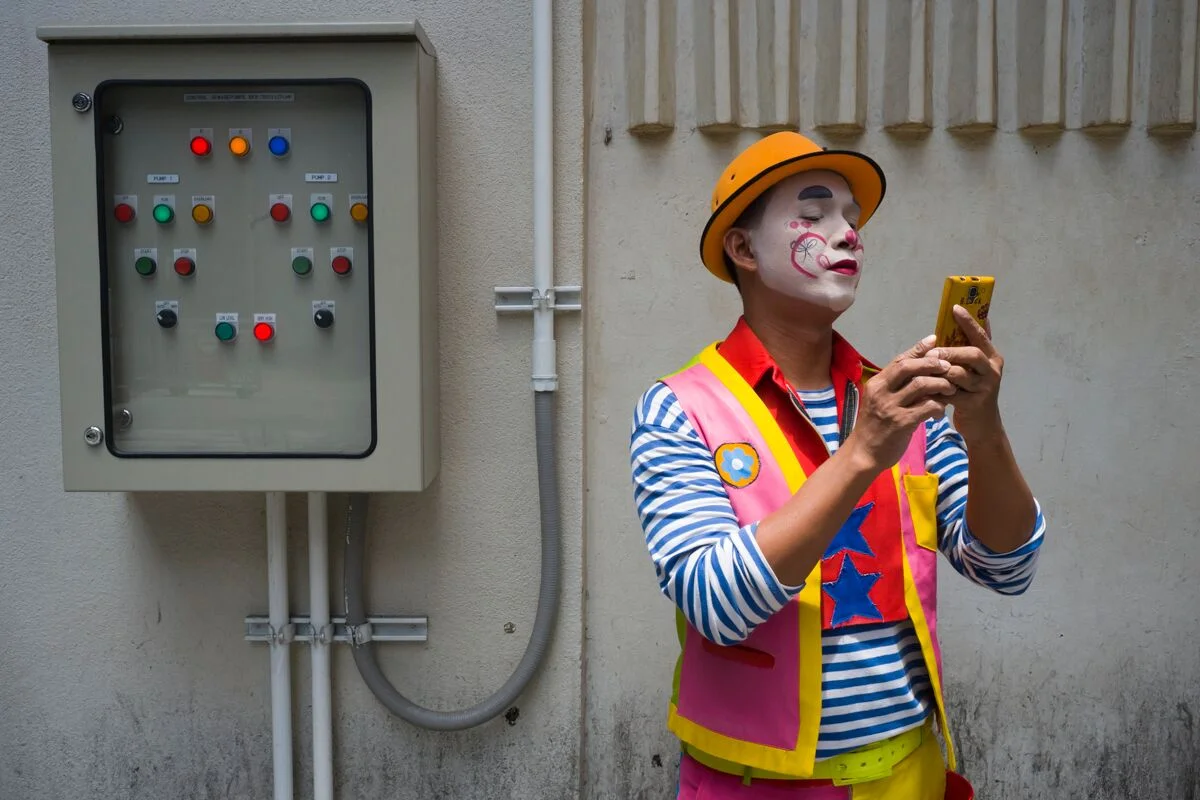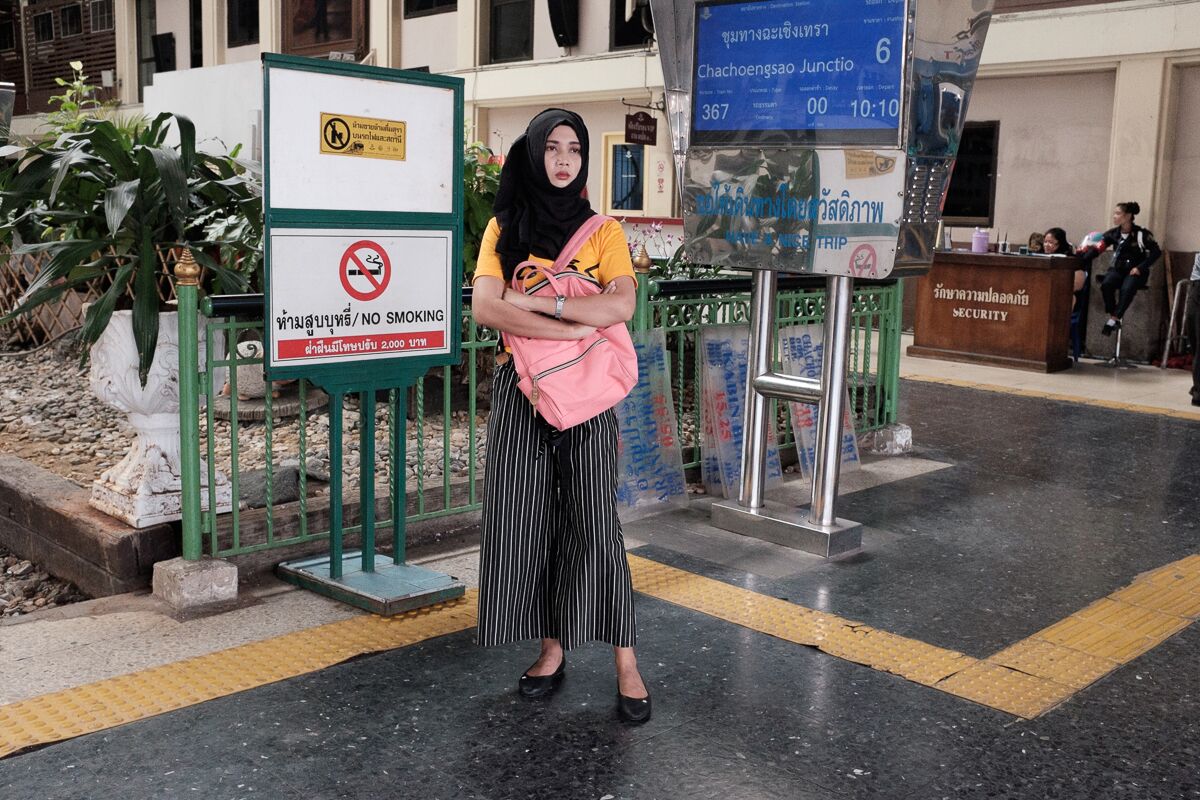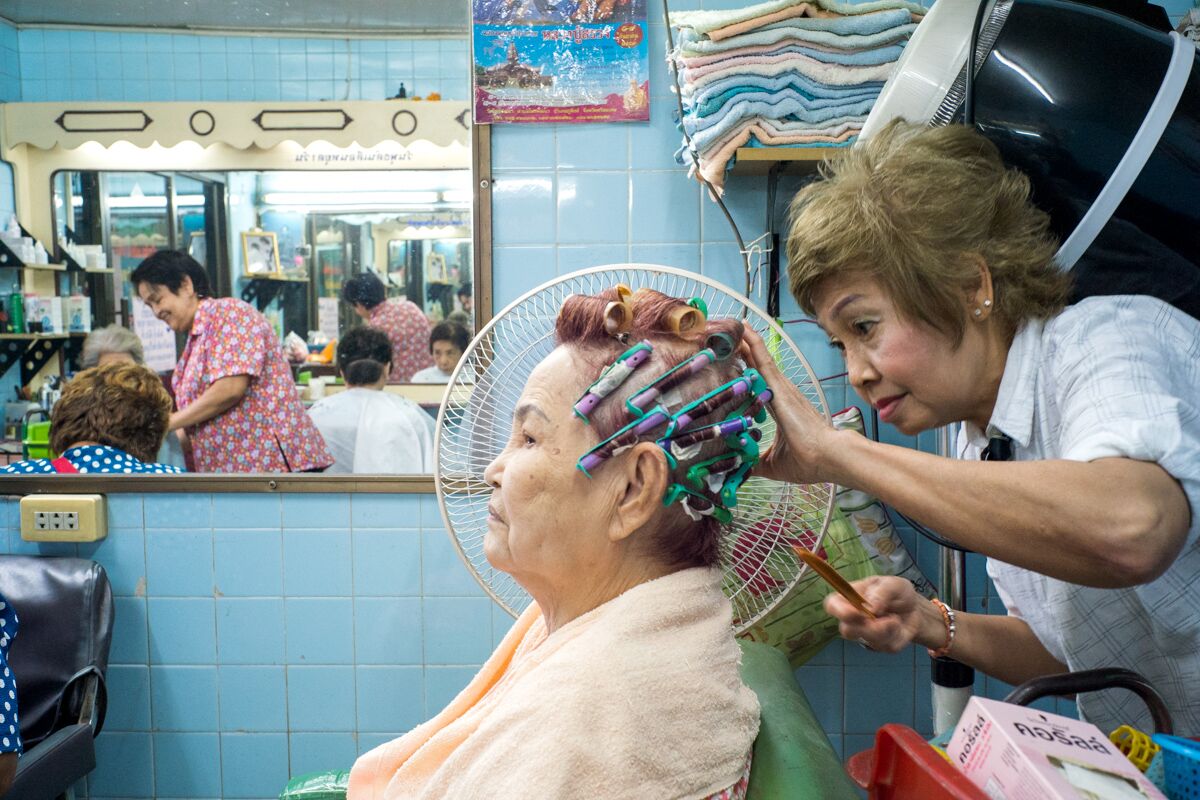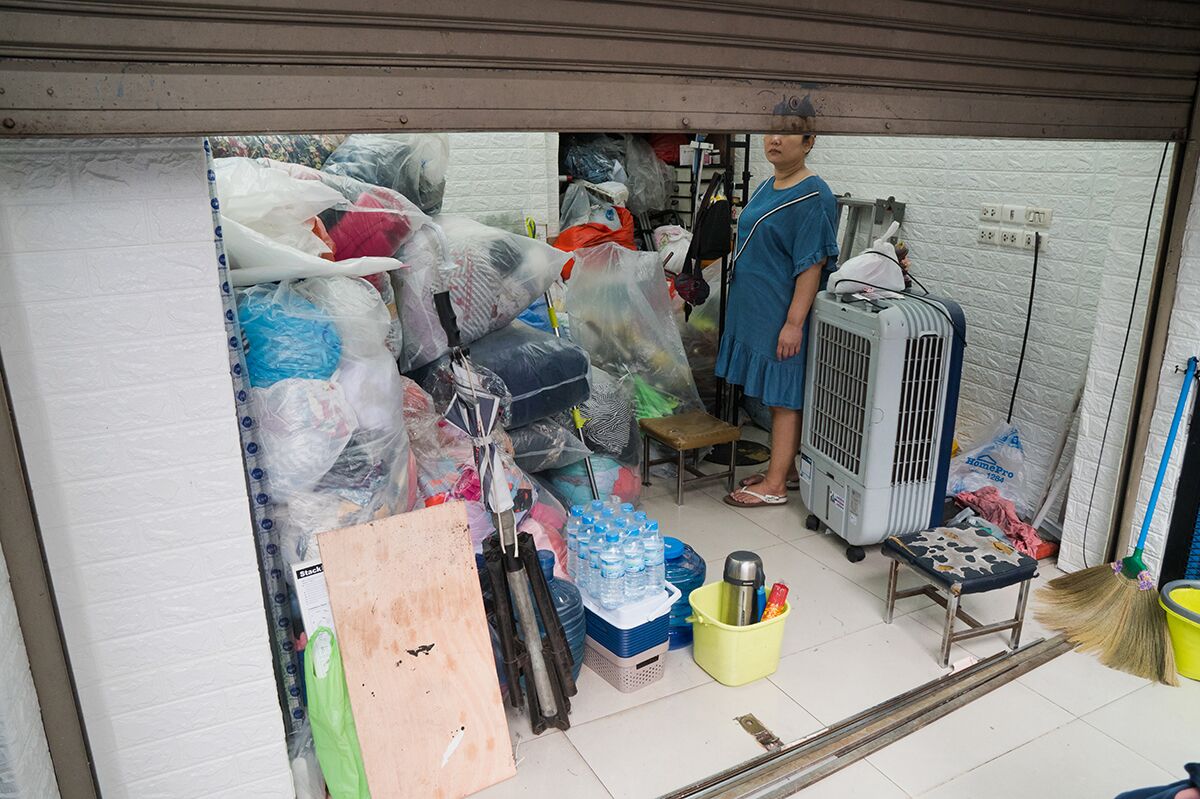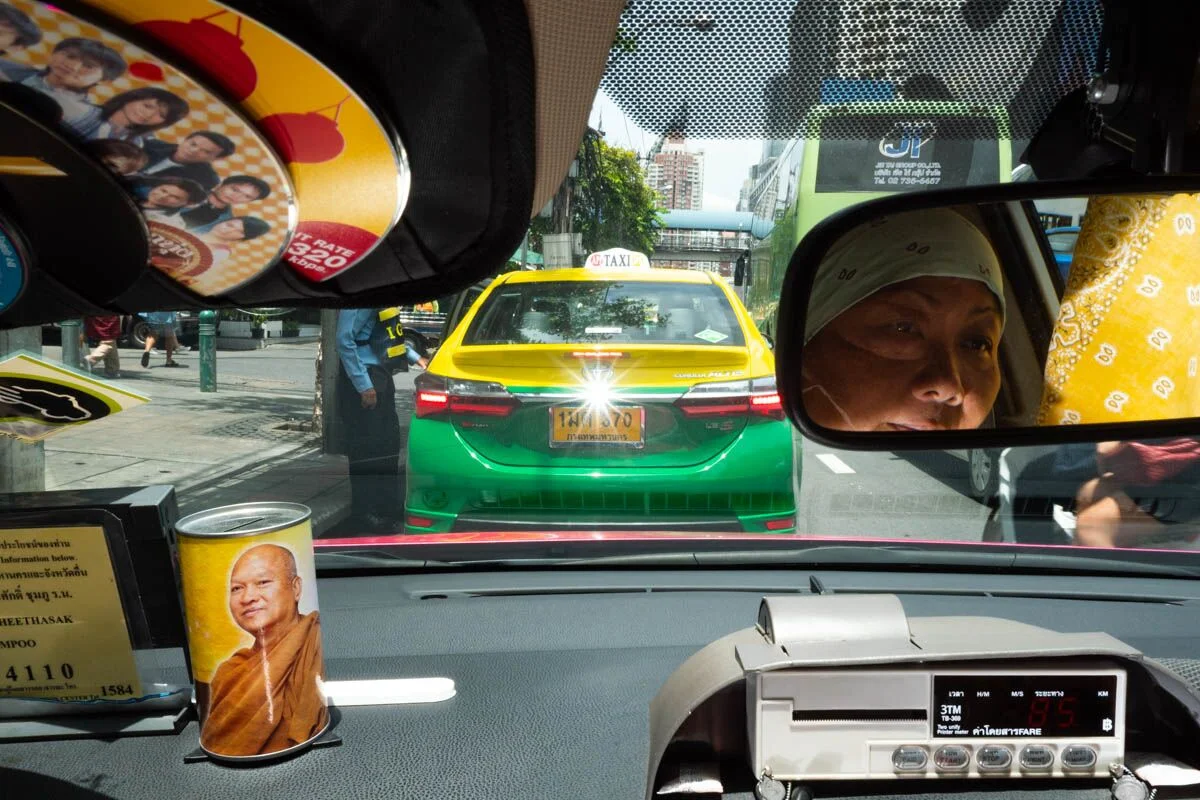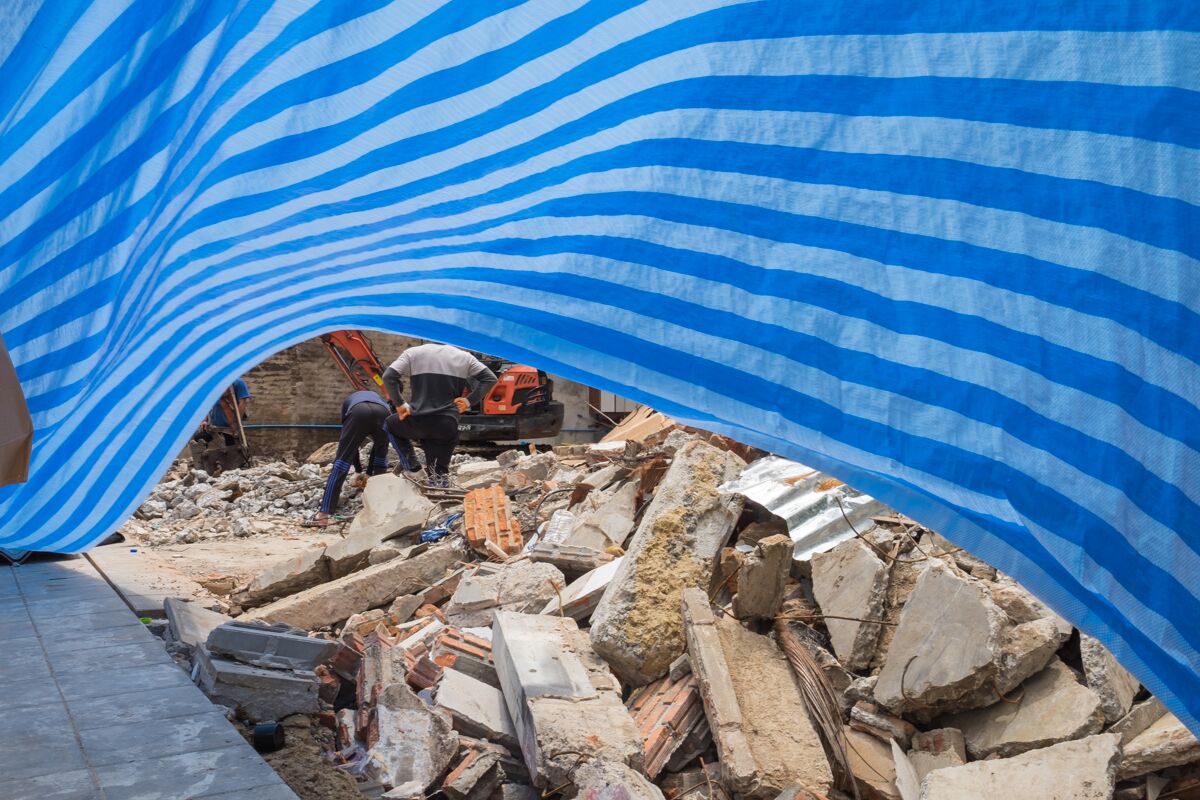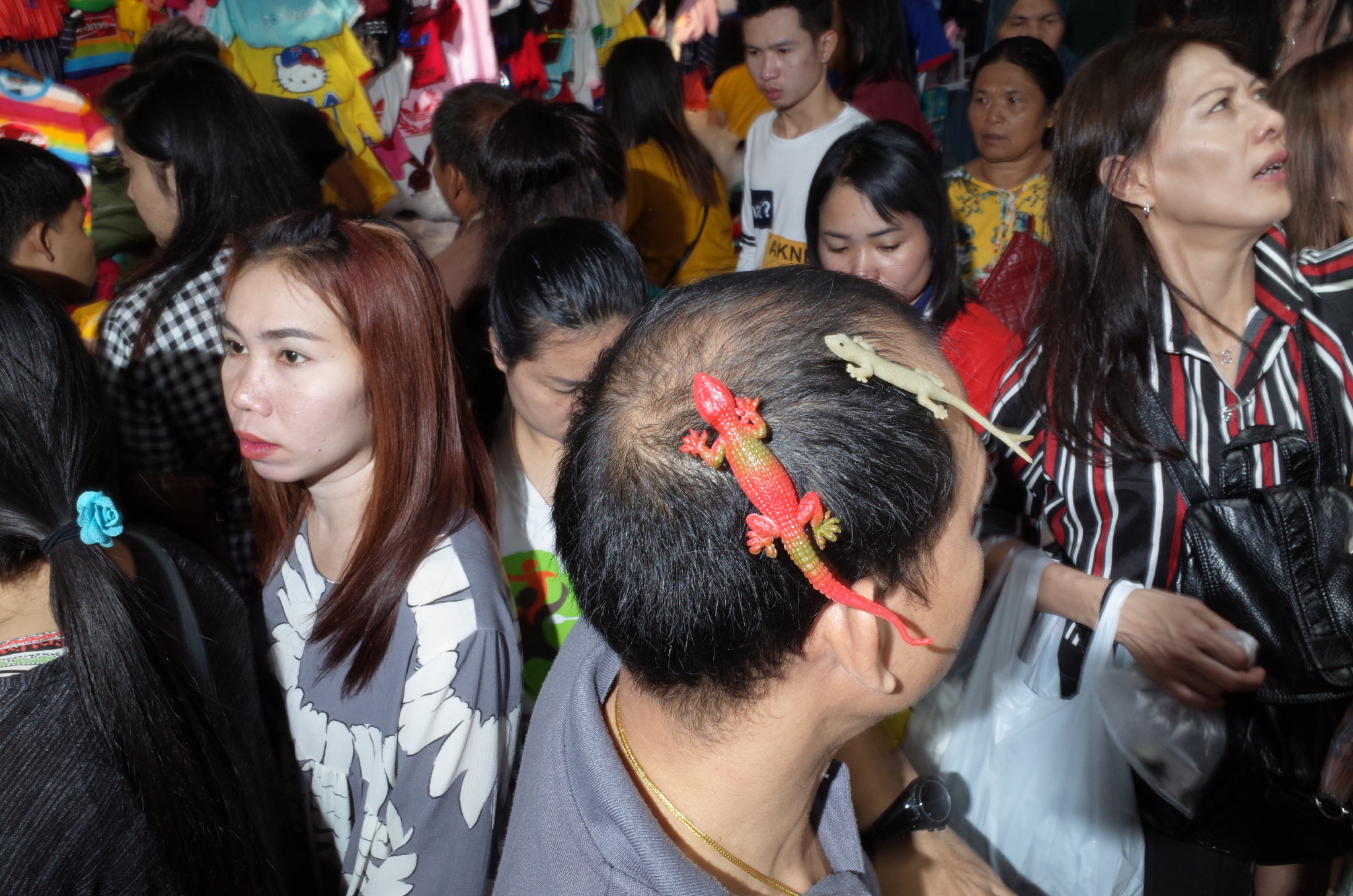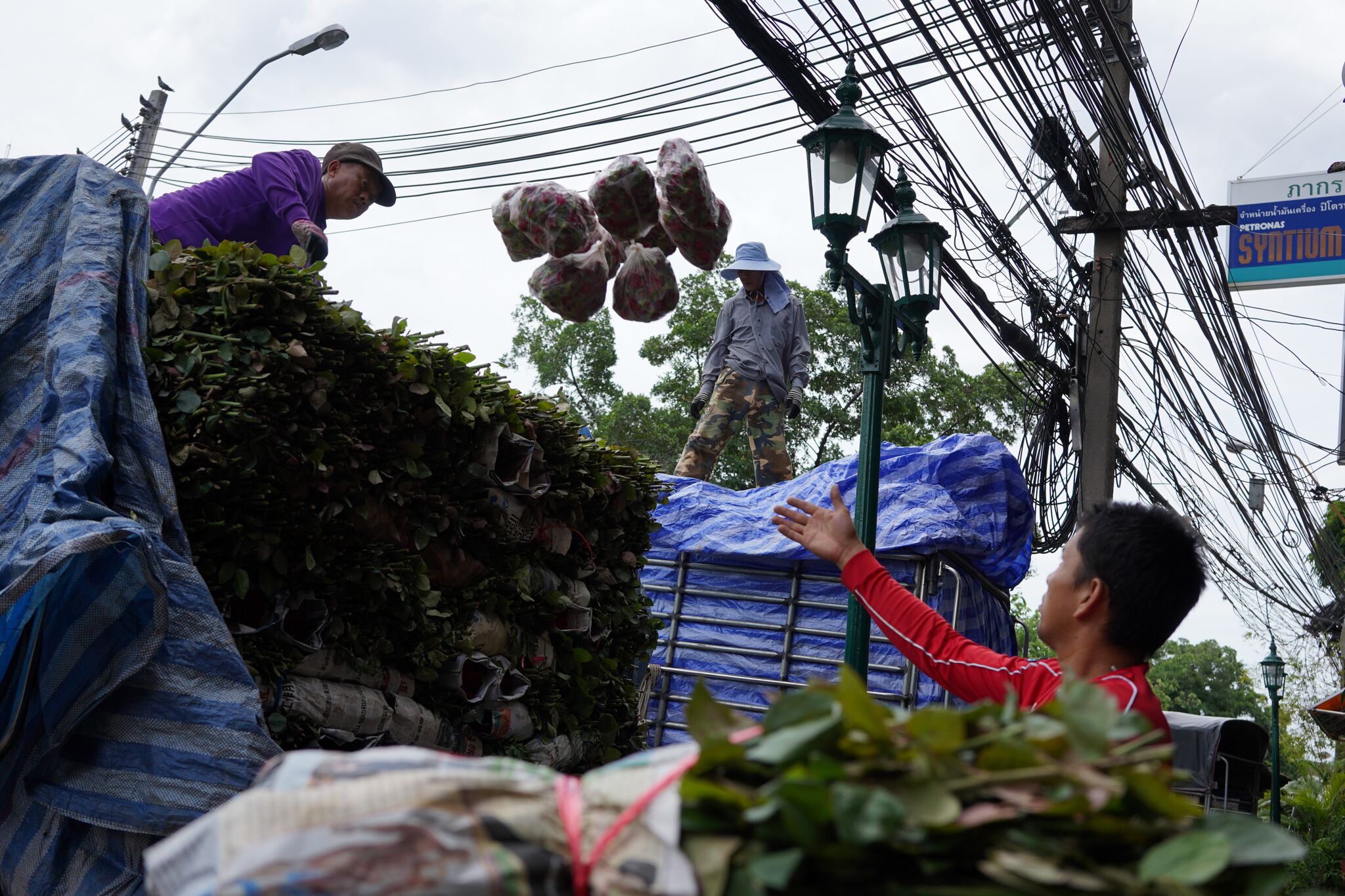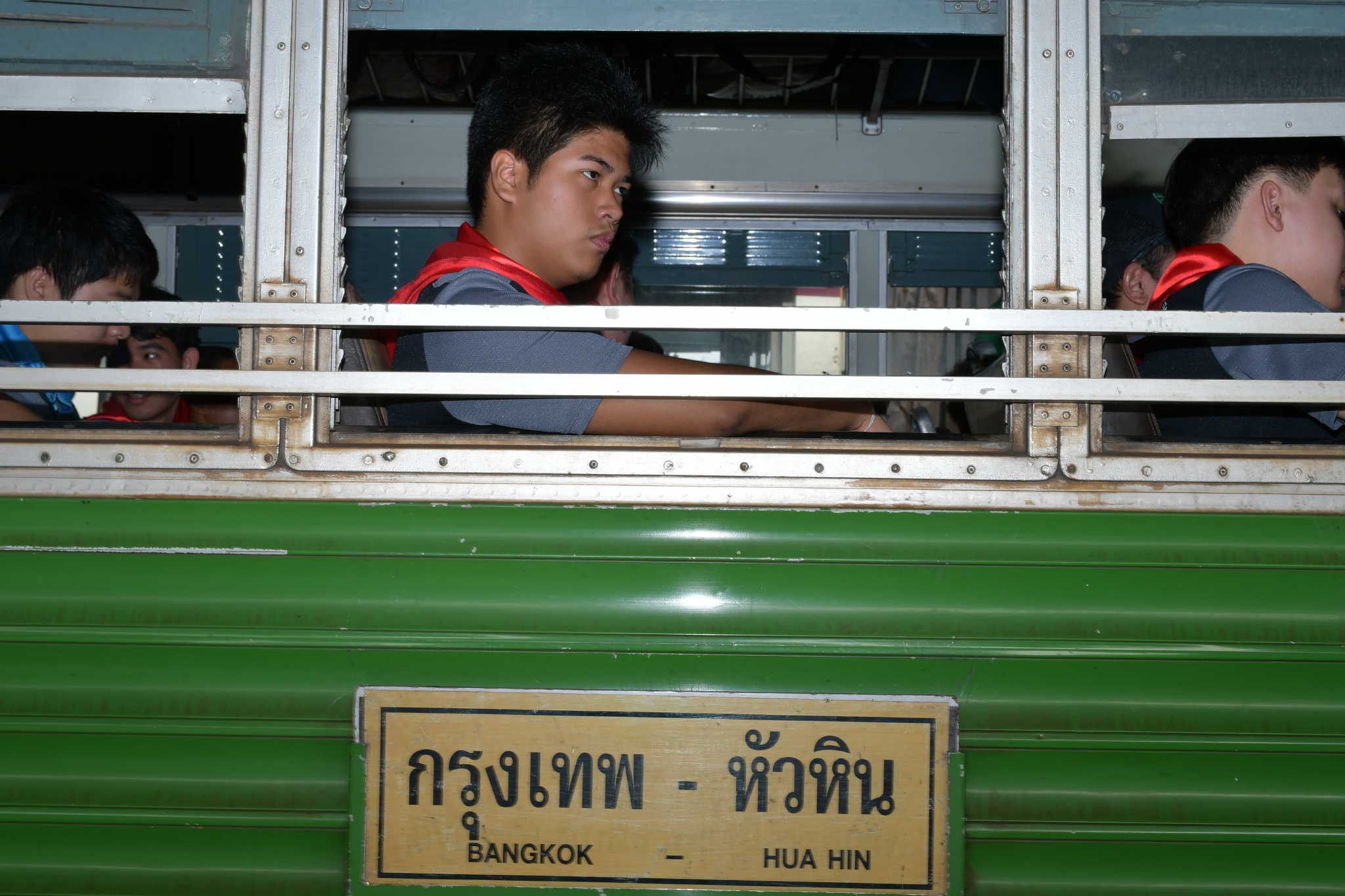by TC Lin
I was recently invited by the Bangkok Street Photography Festival to teach a street photography workshop there along with my fellow Burn My Eye member Barry Talis from Tel Aviv, Israel, with the help of another BME comrade, Rammy Narula, who is himself a Thai national of Indian extraction. As neither Barry nor I had ever been to Thailand, we both arrived several days early to get a feel for the place as well as what photographing there is like. We found the Thai people to be incredibly hospitable and open concerning photography, no doubt in some part due to the photographic passion of their late king over the past half century, and the streets, especially those around our Chinatown hotel and along the river, to be the source of fascinating scenes both day and night.
The three-day workshop began on Friday evening. I would like to have started earlier in the day, especially as there was a certain amount of time-consuming translation involved, but people can’t generally take off from work all that easily. After we introduced ourselves, we asked the students to tell us what they hoped to get out of the workshop, as well as going through some of their previous work and describing their aims and challenges in making it. Then I gave a presentation of some of my views on the practice of street photography, modified a bit based on notes I’d taken in order to fit some of the students’ questions and issues.
All of the students were capable photographers and knew their way around their cameras. Their work wasn’t bad either; the main issue I could see was that they were unsatisfied with what they were doing but unsure exactly why this was so. Over the next couple of days, Barry and I attempted to steer their focus from style to intent in order to approach their issues from a more personal angle. We started out at the venerable train station, the site of Rammy’s book Platform 10, and quite suitable for shooting with a group. We initially divided the students between us, half with me and half with Barry, and then switching on our way to Chinatown for more shooting. The reason for this was that Barry wanted to give an introduction to flash, and I don’t generally use flash. Once that was done, we could work in a large group.
I don’t tend to hold students’ hands when they’re shooting; I prefer to be in the vicinity, observing, answering questions and giving advice when I feel it’s necessary. We shot for a time and then met up to discuss everyone’s progress, look at a few shots if necessary, and then spreading out again with new advice and more specific instruction for individuals.
That afternoon we met up back at the workshop space to go over what everyone had done that morning. It was a bit grueling because I could feel some resistance to leaving their tried-and-true comfort zones, but I maintain that this is the best way to improve in the long run. Our workshops are not meant to make students produce a few shots that make them feel good over the weekend, after which they go back to their old ways. We hope that the ideas we provide can result in more personal, individualistic work, which I believe is what we need more of these days. I talked a bit about this at a symposium with Barry and Rammy at the Bangkok Arts and Culture Center on Saturday night, as part of the Bangkok Street Photo Festival.
On Sunday, the last day of the workshop, we met up in another part of town that Barry and I had not yet visited. We then walked through a fabric market, and while some people walked through the market and found it not to their liking, others were happily exploring the alleys leading off it, the nooks and crannies of the “backrooms” so to speak. My assistant Chenbl Chen and I got somewhat lost for a bit, but thanks to GPS found our way back to the next meeting point.
In the afternoon we split up again, with some students going with Barry to the Palace to photograph the more touristy areas, while others came with us to an older neighborhood that is home to a Muslim population. It seemed that many people feel that Barry and I have very different styles because he tends to use flash and I tend not to, but I think our styles are not as dissimilar as most would think once you get past the utilization of the flash. What impressed me most about Barry was not how calm he was most of the time, but rather how he sprang to life when he saw a shot and pounced before returning to his previous state of composure.
We spent the late afternoon back at the workshop space, once again going over the work. The students seemed to be taking our advice to heart and shooting what touched them emotionally rather than what they expected others would like most. This might have seemed counterintuitive in the short term, but I hope it helps at least some if not all of them find themselves, photographically speaking. I also attempted to impress upon them that the real work started the moment they walked out that door.
That night, we had dinner together at the restaurant downstairs, along with some other photographers, both local and foreign. I had the chance this time to meet several photographers I’ve admired and known online for a long time but never before met in real life, not just Barry but also Aik Beng Chia, Larry Hallegua, Daniel Huete, Enamul Kabir, Noppadol Maitreechit and Tavepong Pratoomwong, and the workshop’s timing was such that I was able to obtain several of the first batch of copies of Tavepong’s new book.
So I had a great time in Bangkok, and it was great to get to know a bit about Thailand and its people, as well as see so many friends, old and new. The festival organizers worked incredibly hard with limited resources and under strict time constraints to make the event in general as well as the workshop a great success, and we really appreciated their efforts. I look forward to further excursions to Thailand in the future.
Most importantly, I hope that, between Barry, Rammy and myself, we were able to sow some seeds that will blossom in the years to come in the world of Thai photography.
What follows is a sample gallery of students' work produced during the workshp.
